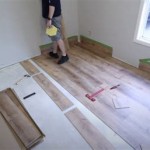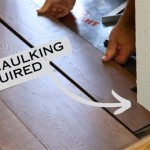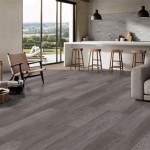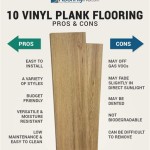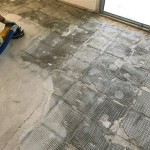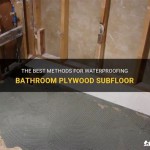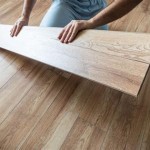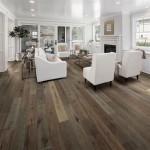Repairing Water Damage to Laminate Wood Flooring
Laminate wood flooring, valued for its affordability and aesthetic appeal, is a popular choice for residential and commercial spaces. However, its susceptibility to water damage presents a significant maintenance challenge. Unlike solid hardwood, laminate flooring comprises a composite core topped with a photographic layer and a protective wear layer. When exposed to moisture, the core can swell, warp, and delaminate, necessitating repairs or even complete replacement. This article provides a comprehensive guide to identifying, assessing, and repairing water damage to laminate flooring.
Identifying Water Damage
Early detection of water damage is crucial to minimizing the extent of the problem and the cost of repairs. Recognizing the signs of water exposure allows for prompt intervention to prevent further deterioration.
One of the most obvious indicators of water damage is visible swelling along the seams of the laminate planks. This occurs as the core material absorbs moisture and expands. The swelling can be localized to the area of water exposure or spread across a wider area, depending on the duration and extent of the moisture contact.
Another common sign is warping or buckling of the flooring. As the core material expands unevenly, it can cause the planks to lift or distort. This is particularly noticeable in areas where water has pooled or seeped under the flooring.
Discoloration or staining of the laminate surface can also indicate water damage. While the wear layer is designed to protect against surface stains, prolonged exposure to moisture can cause the underlying photographic layer to become discolored or faded. This is often accompanied by a musty odor, indicating the presence of mold or mildew.
In some cases, the damage may be less obvious. A spongy or soft feel underfoot can indicate that the core material has been compromised and is no longer providing adequate support. This is often accompanied by a creaking or squeaking sound when walking on the affected area.
Finally, it is important to check for signs of water damage in areas adjacent to potential sources of moisture, such as leaky pipes, overflowing appliances, or exterior doors and windows. Even small amounts of water can cause significant damage over time.
Assessing the Extent of the Damage
Once water damage has been identified, it is essential to assess the severity and extent of the problem. This assessment will determine the appropriate course of action, whether it be localized repairs or complete floor replacement.
Begin by identifying the source of the water intrusion and taking steps to eliminate it. This may involve repairing a leaky pipe, sealing a window, or addressing other underlying causes of moisture exposure. Failure to address the source of the water problem will result in recurring damage, regardless of the repairs performed.
Carefully inspect the affected area to determine the extent of the damage. Use a moisture meter to measure the moisture content of the flooring and the subfloor. A moisture meter reading above the recommended level indicates that the material is still wet and requires further drying.
Remove any baseboards or trim around the perimeter of the affected area to expose the edges of the laminate planks. This will allow for a more thorough inspection of the damage and facilitate the removal of the affected planks.
Carefully examine the planks for signs of swelling, warping, discoloration, or delamination. Note the location and size of any damaged areas. If the damage is localized to a few planks, it may be possible to replace only those planks. However, if the damage is widespread or extends to the subfloor, complete floor replacement may be necessary.
Inspect the subfloor for signs of water damage, such as staining, mold growth, or rot. If the subfloor is damaged, it must be repaired or replaced before installing new laminate flooring. Neglecting subfloor repairs can compromise the stability of the new flooring and lead to recurring problems.
Document the extent of the damage with photographs and detailed notes. This documentation will be helpful when discussing the problem with contractors or insurance adjusters.
Repairing Water-Damaged Laminate Flooring
The repair process for water-damaged laminate flooring depends on the extent of the damage. Minor damage, such as surface stains or small areas of swelling, may be repairable. However, more extensive damage, such as warping or delamination, typically requires plank replacement.
Addressing Minor Surface Damage: For minor surface stains or discoloration, a mild cleaning solution and a soft cloth may be sufficient. Avoid using abrasive cleaners or harsh chemicals, as these can damage the wear layer of the laminate flooring. For stubborn stains, a laminate floor cleaner specifically designed for removing stains can be used. Follow the manufacturer's instructions carefully.
Small areas of swelling can sometimes be addressed by allowing the flooring to dry thoroughly. In many cases, the swelling will subside as the moisture evaporates. Using a dehumidifier can accelerate the drying process. However, if the swelling persists or is accompanied by warping, plank replacement is necessary.
Replacing Damaged Planks: Replacing damaged planks involves carefully removing the affected planks without damaging the surrounding flooring. This requires patience and precision.
Begin by removing the baseboards or trim around the perimeter of the affected area. This will expose the edges of the laminate planks and allow for easier removal.
If the planks are installed with a click-lock system, use a tapping block and a hammer to gently tap the planks loose. Start at the edge of the damaged plank and work your way inward. Be careful not to damage the adjacent planks.
If the planks are glued down, use a heat gun or a solvent-based adhesive remover to soften the adhesive. Carefully pry the planks loose using a putty knife or a similar tool. Be careful not to damage the subfloor.
Once the damaged planks have been removed, clean the subfloor thoroughly. Remove any debris or adhesive residue. If the subfloor is damaged, repair or replace it before installing the new planks.
Install the new planks following the manufacturer's instructions. If the planks are installed with a click-lock system, align the edges of the planks and tap them into place using a tapping block and a hammer. If the planks are glued down, apply adhesive to the back of the planks and press them firmly into place. Ensure that the new planks are properly aligned with the surrounding flooring.
Replace the baseboards or trim around the perimeter of the area. Use caulk to seal any gaps between the baseboards and the flooring. This will help prevent water from seeping under the flooring in the future.
Preventing Future Water Damage: Preventing future water damage is crucial to protecting the investment in laminate flooring. Taking proactive steps to minimize the risk of water exposure can significantly extend the life of the flooring.
Ensure that all plumbing fixtures are properly maintained and that any leaks are promptly repaired. Regularly inspect under sinks, behind toilets, and around appliances for signs of water damage.
Seal any cracks or gaps around windows and doors to prevent water from entering the home. Use weather stripping and caulk to create a watertight seal.
Use mats and rugs in high-traffic areas and in areas prone to water exposure, such as kitchens and bathrooms. This will help protect the flooring from spills and splashes.
Clean up spills and splashes immediately. Do not allow water to sit on the flooring for extended periods of time.
Consider installing a water leak detection system to alert you to potential leaks before they cause significant damage. These systems can detect even small amounts of water and provide early warning, allowing you to take action before the problem escalates.
By following these steps, individuals can effectively repair water damage to laminate flooring and prevent future problems. Proper maintenance and prompt attention to water-related issues are essential for preserving the beauty and longevity of laminate flooring.

How To Prevent Repair Water Damage Laminate Flooring Claude Browns

A Guide To Fix Wet Laminate Floors All Dry Usa

How Do I Camouflage Water Damaged Laminate Flooring Hometalk

How To Repair Laminate Flooring The Home

Repair Water Damaged Laminate Flooring

How Do I Repair My Wood Floor After A Flood

How To Repair Laminate Flooring With Water Damage Dry Force

How To Repair Laminate Flooring With Water Damage 12 Steps

How To Repair Laminate Flooring The Home

Repair Or Replace Water Damaged Floors 50floor
See Also
